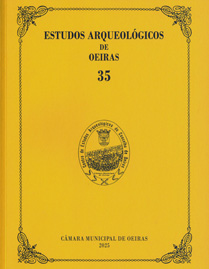The two episodes of use of the Alto da Feteira dolmen (Pombal, Leiria) and the Megalithism on the coastal centre of the Portuguese territory, between the Middle Neolithic and the Late Neolithic
DOI: 10.5281/zenodo.15005679
Keywords:
Alto da Feteira, Megalithism, Middle Neolithic, Late NeolithicAbstract
The dolmen of Alto da Feteira (municipality of Pombal, district of Leiria) corresponds to a megalithic tomb built using local limestone slabs, identified and excavated in the 1960s by Luís de Albuquerque e Castro and Octávio da Veiga Ferreira, having provided a votive set indicating two probable use phases: a first one, relating to the Middle Neolithic, characterized by the presence of geometric armatures, small unretouched flint blades and bladelets, bracelets on Glycymeris valve and probably polished stone tools in sillimanite; a second one, already related to the Late Neolithic (which may extend to the Early Chalcolithic), characterized by the presence of arrowheads, halberds, large retouched flint blades, pottery (including carinated bowls), sandstone and greywacke plaques and adornment elements (including bone pins with channelled head and «green stone» and lignite beads). For this last phase, radiocarbon dating is available, centred on the last third of the 4th millennium BC (median probability: 3210 cal BCE 2σ; mean: 3243 cal BCE 2σ).
This paper intends to present the integrated study of this monument, describing two use moments immediately succeeding in Time, framing it in the context of Megalithism in the coastal centre of the Portuguese territory (between the northern edges of the Estremadura Limestone Massif and the lower course of the Mondego River), and in the evolutionary levels of the megalithic phenomenon in Western Iberia, between the Middle Neolithic and the Late Neolithic.
Downloads
Published
How to Cite
Issue
Section
License
Os artigos publicados são da exclusiva responsabilidade dos Autores.
É expressamente proibida a reprodução de quaisquer imagens sobre as quais
existam direitos de autor sem o prévio consentimento dos signatários dos artigos
respectivos.




